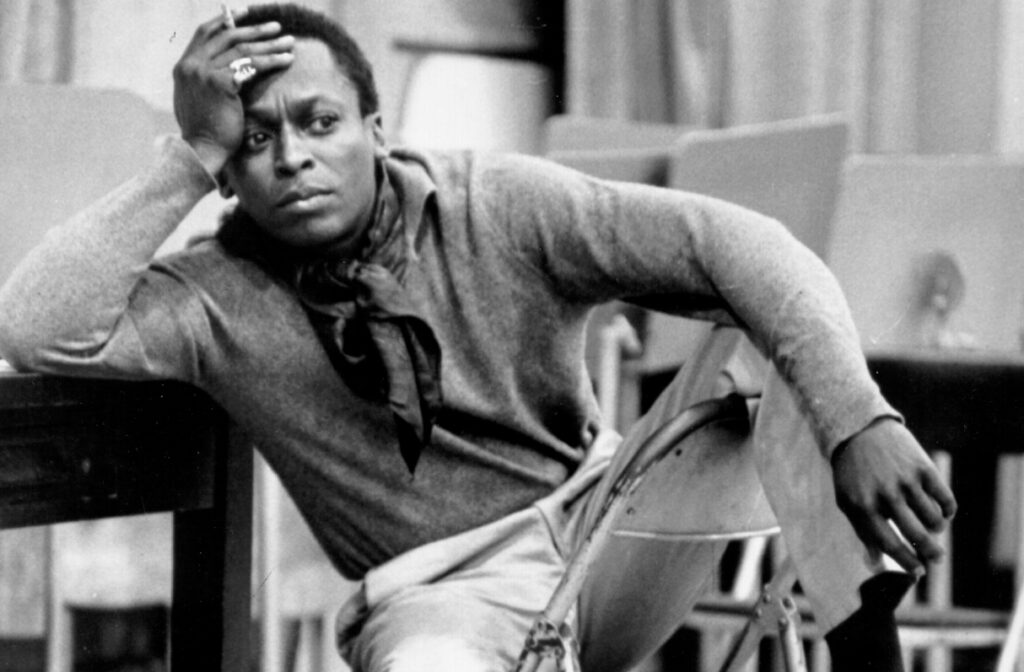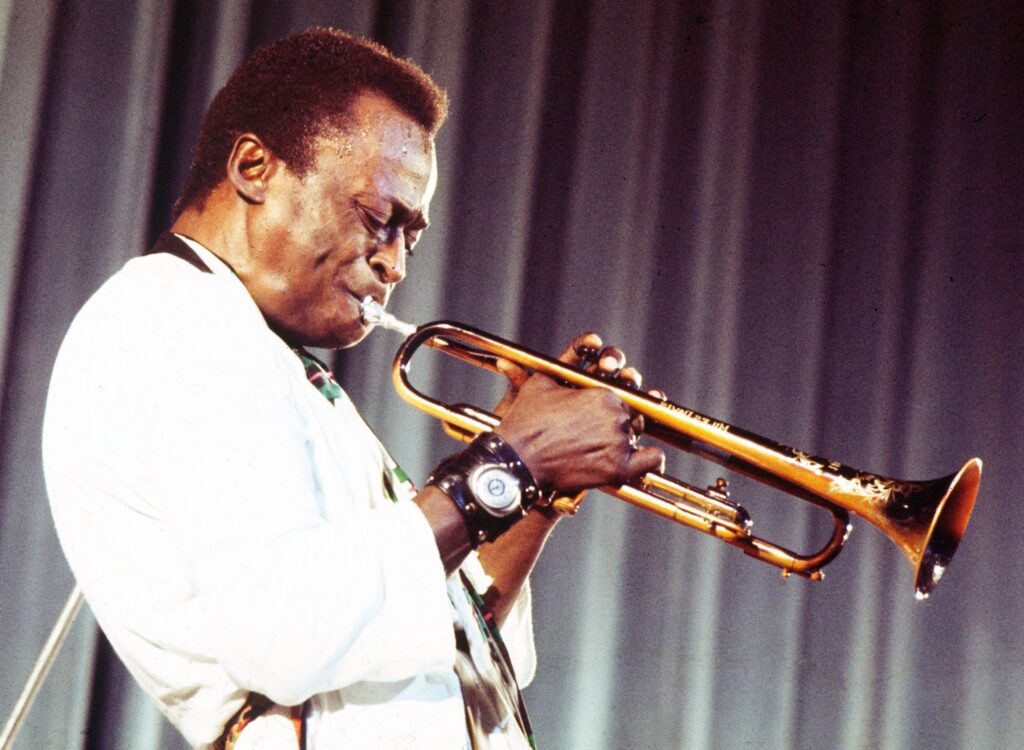Dive into the Power & Passion of ‘Tenor Madness
In the vast panorama of jazz, Sonny Rollins’ “Tenor…
The 1960s bore witness to a profound metamorphosis in jazz, a metamorphosis embodied by the legendary Miles Davis. As a restless innovator, Davis sculpted the soundscape of the decade, transcending traditional boundaries and creating a new vocabulary for the genre. In this period of musical revolution, Davis navigated the realms of modal jazz, post-bop, and jazz fusion with unparalleled artistry, leaving an indelible mark on the jazz world.

Modal jazz emerged as a response to the constraints of bebop, liberating musicians from rigid chord structures and inviting them to explore new sonic territories. “Kind of Blue” (1959), a seminal work in Davis’ oeuvre, exemplifies this approach. By embracing modes as the foundation for improvisation, the album freed musicians to venture beyond the well-trodden paths of bebop harmony. The reverberations of this freedom can still be felt today, as “Kind of Blue” remains a timeless testament to the power of creative expression.
As the decade progressed, Davis delved further into uncharted waters, giving rise to post-bop. Albums like “E.S.P.” (1965) and “Nefertiti” (1967) showcase the quintessential characteristics of this new genre: intricate compositions, adventurous harmonic progressions, and an unyielding commitment to improvisation. These works signaled the evolution of jazz, as musicians embraced complexity and abstraction in pursuit of a more profound artistic statement.
In the twilight of the ’60s, Davis embarked on yet another groundbreaking journey, venturing into the realm of jazz fusion. Fusing elements of rock, funk, and electronic music with jazz, Davis shattered preconceived notions of what the genre could be. “In a Silent Way” (1969) and “Bitches Brew” (1970) stand as testaments to his visionary approach. The soundscapes crafted within these albums resonated with a generation eager for change, propelling jazz into an electrifying new era.

Central to this period of innovation was the Second Great Quintet, a collective of prodigious musicians whose synergy with Davis produced genre-defining music. Comprising Herbie Hancock, Wayne Shorter, Ron Carter, and Tony Williams, the quintet pushed the limits of jazz expression, exploring uncharted harmonic and rhythmic territories. Together, they forged a new path, redefining the possibilities of ensemble interplay and elevating the genre to new heights.
Throughout this transformative decade, Davis collaborated with a multitude of talented musicians, whose contributions proved essential to the realization of his vision. The recording sessions for the albums mentioned above were conducted under various labels and at diverse locations, providing a fertile environment for creative exploration. Many of these musicians, such as Chick Corea and John McLaughlin, would go on to become prominent figures in their own right, their careers forever shaped by their time with Davis.
As we delve into the tracks that define this era of Miles Davis, we find a rich tapestry of sound, imbued with the spirit of innovation. On “Kind of Blue,” the sublime “So What” exemplifies the essence of modal jazz, while “Blue in Green” reveals an introspective depth that lingers long after the last note has faded. The intricate compositions of “E.S.P.” and the ethereal beauty of “Nefertiti” showcase the quintet’s mastery of post-bop, with each musician’s contribution weaving seamlessly into the fabric of the music.
“In a Silent Way” transports us to the dawn of jazz fusion, with its hypnotic grooves and atmospheric textures. The album’s title track, a personal favorite, unfolds like a slow-burning ember, its warmth radiating through the darkness. On “Bitches Brew,” the sprawling, kaleidoscopic tapestry of “Pharaoh’s Dance” and the frenetic energy of “Miles Runs the Voodoo Down” exemplify the electrifying fusion of jazz, rock, and funk that would come to define the genre.
Upon their release, these albums sparked a range of reactions within the jazz community. Traditionalists balked at the departure from conventional forms, while others embraced the new direction with open arms. As time progressed, it became increasingly clear that Davis’ fearless experimentation had transformed the landscape of jazz, offering a fresh perspective and inspiring countless musicians to follow in his footsteps.
Today, the impact of these groundbreaking works is indisputable. They are hailed as milestones in the evolution of jazz, their influence extending far beyond the genre’s boundaries. The albums serve as a reminder that the power of creative expression knows no limits, that the pursuit of artistic truth can reshape the world around us. In conclusion, the 1960s were a period of tremendous change, not just for Miles Davis, but for jazz as a whole. The modal explorations of “Kind of Blue,” the post-bop complexities of “E.S.P.” and “Nefertiti,” and the genre-defying fusion of “In a Silent Way” and “Bitches Brew” reflect an artist in constant pursuit of innovation. As we reflect on this decade of transformation, we are reminded of the enduring legacy of Miles Davis and the indelible mark he left on the world of music. Through his fearless creativity and unwavering dedication to his craft, Davis showed us that the only true boundaries are those we impose upon ourselves.